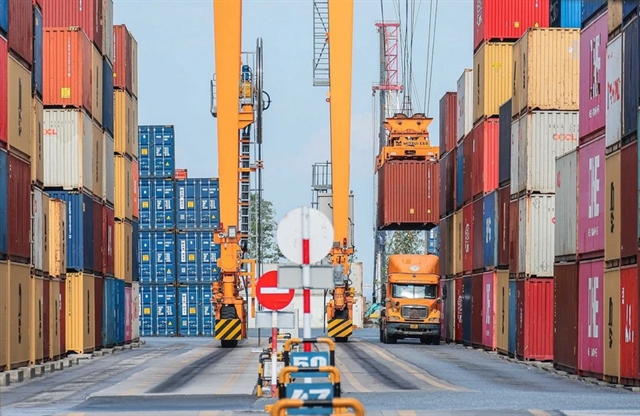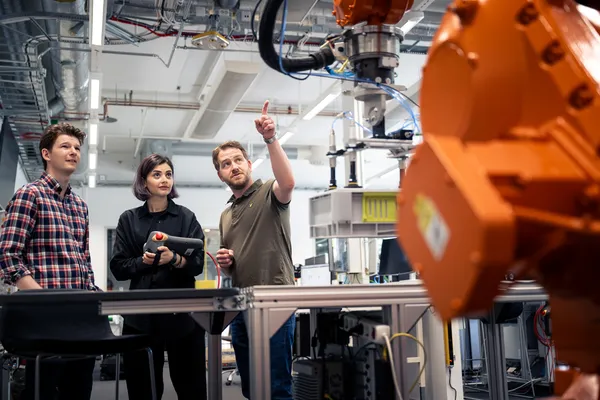 Politics & Law
Politics & Law

 |
| Nam Đình Vũ Port in Hải Phòng City. By the end of 2023, bilateral trade with Russia rose by 8.3 per cent compared to 2022. The upward trend continued into 2024, with trade increasing by 23.9 per cent in the first ten months year-on-year. — VNA/VNS Photo |
Ahead of Russian Prime Minister Mikhail Mishustin's visit to Việt Nam, Vladimir Ilichev, Russia’s Deputy Minister of Economic Development, discussed recent economic and trade achievements and future cooperation prospects with a Vietnam News Agency correspondent in Russia.
What is your assessment of Việt Nam-Russia trade and economic cooperation in 2024 and in recent years?
Evaluating the recent outcomes of Russia-Việt Nam cooperation requires understanding the broader context of its development. Sanctions imposed on Russia have significantly impacted trade and investment dynamics, with effects on bilateral economic relations becoming apparent as early as 2018.
At that time, the inclusion of several Russian companies on sanction lists disrupted joint projects. By 2022, both nations faced systemic challenges in logistics and payment mechanisms.
Despite these obstacles, both sides have successfully adapted to new conditions, revitalising trade and economic relations.
By the end of 2023, bilateral trade rose by 8.3 per cent compared to 2022. The upward trend continued into 2024, with trade increasing by 23.9 per cent in the first ten months year-on-year.
Both exports and imports have grown, and Russia has become Việt Nam’s second-largest pork supplier after Brazil, accounting for 29.8 per cent of Việt Nam’s imported pork volume by November 2024.
New multimodal logistics routes between the two nations have been established and continually expanded with additional services. Ports in Hà Nội and HCM City now serve as key transportation hubs for Russian firms delivering goods to other Southeast Asian countries, including Malaysia and Thailand.
The use of local currencies in bilateral trade is increasing. The Việt Nam-Russia Joint Venture Bank has played a key role in facilitating trade in rubles and đồng.
Businesses from both nations are also exploring more resilient payment channels unaffected by sanctions.
Tourism has shown a strong recovery. By the end of 2024, the number of Russian tourists to Việt Nam surged by 84.9 per cent.
Việt Nam remains a favourite holiday destination for Russian visitors, while the introduction of Russia’s e-visa system in 2023 has encouraged a steady increase in Vietnamese tourists travelling to Russia.
Although the numbers remain modest, the trend is positive, with more Vietnamese visitors expected this year.
Việt Nam-Russia joint ventures continue to thrive. In 2024, Vietsovpetro marked a milestone by extracting its 250 millionth tonne of oil.
Meanwhile, GAZ Group began mass production of cars in Việt Nam in 2022, and these vehicles are now exported to neighbouring countries, including Laos.
Numerous significant projects are progressing in both countries. In Việt Nam, the Nuclear Science and Technology Centre is under construction.
At the same time, TH True Milk is establishing factories in three major Russian regions - Moscow, Kaluga and Primorsky.
Additionally, several energy projects are advancing rapidly.
These achievements highlight the resilience and growth of Russia-Việt Nam cooperation despite challenges, paving the way for further economic and trade partnerships.
How do you assess the potential for cooperation between the two countries? Which sectors and industries are most likely to appeal to Russian investors? What key products should Việt Nam prioritise for export to Russia?
Russian businesses are poised to boost their supplies of pharmaceuticals, organic cosmetics and confectionery to Việt Nam. The 'Made in Russia' national brands have already made their mark on major e-commerce platforms in Việt Nam, including Shopee, Lazada, Tiki, TikTok Shop and Sendo.
In the meat sector, Russian enterprises are not only increasing exports to the Vietnamese market but are also exploring opportunities to localise production. This includes investments in establishing meat processing facilities and dairy production plants within Việt Nam.
Russia is also keen to launch industrial cooperation projects. In particular, there is an interest in collaborating with Vietnamese container manufacturers to enhance the stability of Việt Nam’s exports to Russia.
Additionally, Russian companies are ready to assist Việt Nam in developing the green energy and transportation solutions, including projects in nuclear energy, wind and hydropower. Russia is also exploring the possibility of supplying low-carbon industrial products and liquefied natural gas (LNG) to Việt Nam.
Digitalisation cooperation presents another promising avenue. Việt Nam has made impressive strides in e-commerce and has set ambitious targets for the digitalisation of public administration. Russia, with its advanced capabilities in this field, is ready to share expertise in satellite technology, smart city solutions, cloud computing, cybersecurity and artificial intelligence.
We are also proposing an expansion of digital logistics services, such as digital navigation and are prepared to offer technology solutions for paperless trade. Russia’s accession to the Framework Agreement on the Facilitation of Cross-Border Paperless Trade in Asia and the Pacific in 2023 opens up new opportunities for collaboration with Việt Nam and other ASEAN nations.
The creative economy is another promising area for partnership. Russia aims to increase the sector’s contribution to GDP from 3.5 per cent to 6 per cent by 2030. We are eager to share our expertise in managing the creative economy and to introduce innovative Russian products to Việt Nam.
For example, the 2023 Russian animated film The Hermitage Cat became one of Russia’s most successful international releases, with Việt Nam accounting for a significant share of its box office revenue.
As for imports from Việt Nam, Russia’s demand for traditional products such as fruits, tea and coffee remains strong. Recently, innovative Vietnamese offerings, like juice teas, have also gained popularity in the Russian market.
There is also growing interest in electronic products, components and industrial cooperation in this sector.
What policies or mechanisms does Russia propose to stimulate economic cooperation?
The Free Trade Agreement between the Eurasian Economic Union (EAEU) and Việt Nam has been in effect since 2016, initially boosting trade between Russia and Việt Nam. Now, Russia is using this experience to forge similar agreements in the region, including with Indonesia.
At this point, the focus must shift to harmonising standards, management practices, reducing non-tariff barriers, and supporting joint projects.
The Russian Ministry of Economic Development acts as the secretariat for the Russian-Việt Nam Intergovernmental Committee on Trade, Economic and Scientific-Technical Cooperation, which is co-chaired by Russian Deputy Prime Minister Dmitry Chernyshenko and Vietnamese Deputy Prime Minister Trần Hồng Hà. Regular meetings are held, with the 25th anniversary of the Committee’s establishment celebrated last year in Moscow.
Both countries have recognised the success of their systematic bilateral cooperation through the Committee. Notable progress has been made in opening up markets for certain goods, harmonising industrial regulation approaches and supporting joint ventures.
New working groups are being set up within the Intergovernmental Committee, including a recent decision to create a group focused on information technology, as well as ongoing discussions about establishing a healthcare cooperation group. These initiatives provide a valuable platform for launching joint projects in areas such as trade, real estate, science and education.
Under the Committee’s framework, both sides have agreed on a comprehensive Cooperation Development Plan through to 2030. This plan details specific steps for collaboration across 13 industries and is expected to be signed during the upcoming visit of Russian Prime Minister Mikhail Mishustin to Việt Nam. — VNS

.jpg)


.jpg)